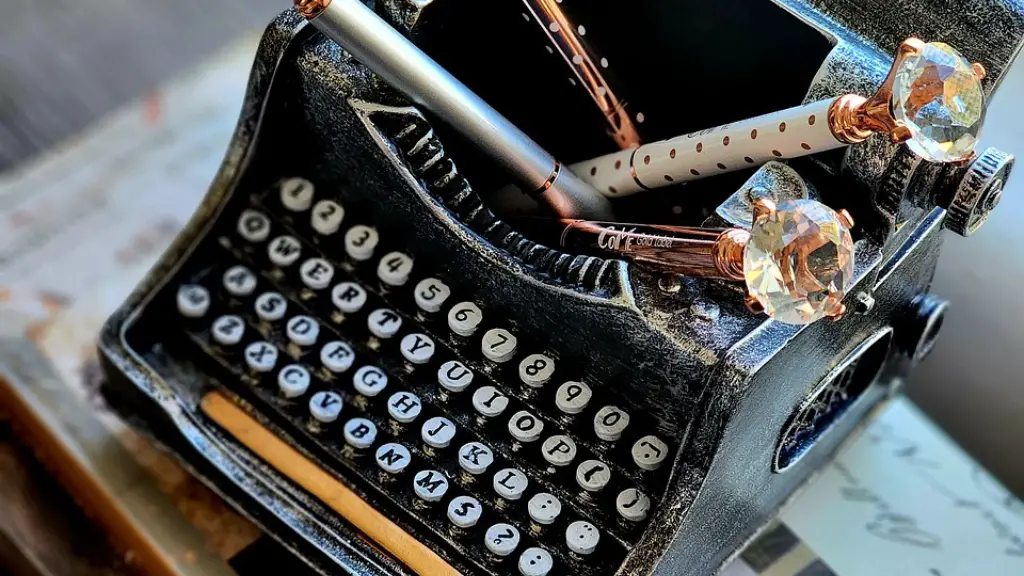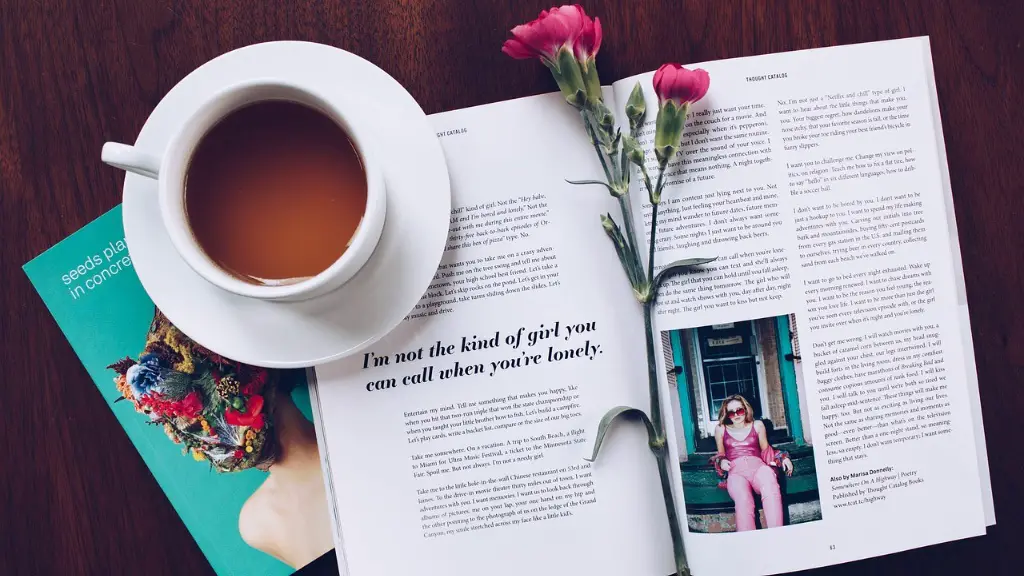How to Mark Stressed and Unstressed Syllables in Poetry
Poetry deals with rhythmic patterns in language allowing readers to explore poems as musical scores. It is important for readers to understand how to analyse and define these patterns as they offer an insight into the meanings, themes and emotions behind the words. In order to do this, readers should be able to identify where strong and weak syllables exist within a poem. The Strong and Weak Syllables in Poetry gives the reader a guide on how to recognise and accurately mark stressed and unstressed syllables.
A good place to start when it comes to understanding pronunciation in poetry is by recognising and marking stressed and unstressed syllables. There are rules that can help to identify these. For example, if a word has more than one syllable then one of the syllables will be stressed and the rest will be unstressed. In a monosyllabic word, both the syllables are stressed. In the English language, there are a few simple rules that can help to determine which syllables are stressed and unstressed. Firstly, the stressed syllables will often have a greater emphasis when pronounced or read aloud; this can be done by raising the pitch or loudness of the syllable. Secondly, unstressed syllables are usually shorter and softer than stressed syllables.
Identifying Rhythmic Schemes in Poetry
Once a reader has identified the stressed and unstressed syllables in a poem, they can begin to look for rhythmic schemes as they are a big factor in classic forms of poetry such as Iambic Pentameter. Iambic Pentameter is a rhythmic scheme formed by pairing five stressed and unstressed syllables together, allowing the meter of the poem to be determined. Identifying the rhythm of a poem allows the reader to understand the meaning for a poem more clearly as it can provide clues to the overall structure. Additionally, when reading poetry it is important to be able to identify which syllables are to be stressed. Being able to accurately read and comprehend a poem offers the reader more insight and meaning behind the words.
Using Punctuation to Aid Analysis
Another thing to pay attention to when analysing stressed and unstressed syllables in poetry is punctuation. Punctuation can be used to aid the rhythm of a poem, as it gives the reader further direction when it comes to emphasising words and syllables. For example, by using exclamation marks and ellipses, the reader is able to create more of an emphasise on the word, thus creating emphasis on the syllable followed by that punctuation mark. This emphasise can also be used when highlighting stressed and unstressed syllables as the emphatic syllables used by punctuation marks often aids in this process.
Writing Poetry Featuring Stressed and Unstressed Syllables
When it comes to writing poems that feature stressed and unstressed syllables, understanding these schemes is essential. When constructing poems, certain words can be used to create emphasis on the stressed syllables. For example, words that are longer tend to create a more distinct emphasis on the stressed syllables, such as ‘underneath’ as opposed to ‘over’. Additionally, the sound of certain syllables allow for more emphasis than others. For example, the letter ‘s’ at the end of a word creates more of an emphasis than other syllables. Understanding these nuances when it comes to effectively constructing poetry is essential for any modern day writer.
Analysis of Metrical Pattern
In order to accurately analyse metrical patterns in poetry, readers should be able to recognise and accurately mark stressed and unstressed syllables. As the properties of syllables, such as pitch and loudness, can provide clues to the pattern of a poem, understanding this is important when attempting to identify or create a rhythmic scheme. Additionally, understanding the rules of stressed and unstressed syllables can also help to construct metrical poetry better as the reader is able to effectively create emphasis on the words they wish to emphasize. This emphasises the importance of being able to comprehend the principles behind stressed and unstressed syllables in order to become a better reader and writer of poetry.
Analysis of Rhyming Scheme
Additionally, readers should also be able to identify and accurately mark rhyming schemes. It is important for readers to be able to identify rhymes as they provide a further insight into the stylistic elements of a poem. Rhymes can be used to enhance the personal styles and themes of a poem. Our personal understanding of rhyme can often provide clues to how a poem should be read and interpreted. Although rhyme is not always essential, it can be used to enhance the overall flow and structure of a poem. By recognising the rhymes and stressing of syllables within a poem, a reader can gain a better understanding of the poem.
Exploring Symbolic and Figurative Language in Poetry
When analysing a poem it is important to note and explore any potential figurative or symbolic language that is used, as such language could be used to convey a message or emotion through the poem. Nature imagery, for example, could be used to explore themes surrounding the fragility of existence, whereas the use of metaphor can help to simplify and emphasise complex ideas. As there is often an ambiguity when it comes to the interpretation of figurative language, it is important for readers to decipher what meaning lies between the lines. By exploring the use of symbolism and figurative language as well as emphasised and unstressed syllables, readers are able to gain a more comprehensive understanding of a poem.
Critiquing Modern Use of ‘Slant Rhyme’ in Poetry
Parallel to the understanding of standard rhyme, modern poets have adopted the use of slant rhyme, or half rhyme, in their work. In a time of disruption, many poets use this modern form of rhyme to convey messages of upheaval and displacement, which mirrors the state of society in the 21st Century. Such themes of alienation can be effectively communicated via the use of imperfect rhyme coupled with the delivery of strong and unstressed syllables. Slant rhymes can also be used to demonstrate the complexities of human emotion; by examining imperfect rhymes and their relationships with stressed and unstressed syllables, verse can be presented in a more fluid form that allows for greater diversity of emotion.
The Use of Rhythm, Prose and Metre in Poetry
The rhythmic structure of language can be explored and developed in order to create powerful and evocative poetry. Meter is the basis of this, though the rhythm of prose can also be used to explore elements of language. By understanding cadence, the poet can create lines and stanzas which embody the intended emotion of their work, and stressed or unstressed syllables can be used to emphasise the beat of the poem. When looking to discern the rhythm of a poem, it is important for the reader to understand how syllables aid in constructing the poem. By combining stressed and unstressed syllables with the rhythm of prose, more engaging poetry can be crafted.
Exploring Minimalism in Poetry
Another modern form of poetry is minimalism, which focuses on exploring emotions and ideas through minimal words and phrases. Through the use of minimal words, this type of poem often conveys important messages, such as understanding the ephemeral nature of life. In minimalism, rhythm is essential, as the only thing that readers have to understand a poem is the rhythm and pattern of the syllables. As such, it is important for readers to be able to understand and identify stressed and unstressed syllables as they can often be used to convey complex thoughts and emotions.
The Role of Poetry in Educating and Engaging Readers
The study of poetry offers readers the opportunity to engage with words and explore language on a deeper level. Through exploring stressed and unstressed syllables, readers are able to understand the rhythm of a poem and the messages behind the text. The language of poetry is often used to educate and engage readers, as certain poetic forms can be used to create deep feelings of understanding and emotion. By emphasising certain syllables, poems can be used to grab the attention of readers and to make them think about the topics of discussion within the poem.



